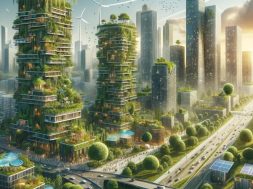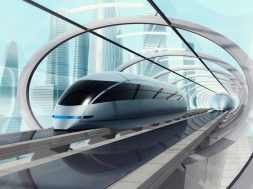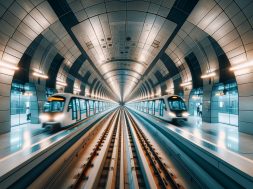India to develop industrial parks to promote sustainable manufacturing

Through sustainable industrial development, India plans to transform cities with manufacturing-led urbanisation, improving the quality of life, generating jobs, and accelerating economic growth.
Manufacturing is always coexisted with urbanisation. Tokyo and Osaka developed into major industrial manufacturing hubs in Japan following World War II. Shenzhen and Guangzhou in China have grown to be megacities. Urban locations frequently have trained labour, which is essential to business.
India is seeing a sharp drop in living conditions as a result of its uncontrolled, fast urbanisation that deviates from sustainable development principles. Manufacturing and urbanisation are vital to “Viksit Bharat.” To achieve its aim of becoming a high-income nation, India will need to expand at a rate of at least 8 percent over the next three decades and maintain a steady increase in investment to approximately 35 percent of GDP. It will take until then for our per capita income to increase from $2,000 to $18,000.
This shift needs to be led by infrastructure development and manufacturing. Labour productivity is correlated with per capita earnings. We must increase worker productivity in order to raise them. Due to low productivity and the fact that approximately 45 percent of the workforce is employed in agriculture, per capita income is significantly lower than that of other G20 countries. Large-scale jobs can be found in manufacturing, which draws labour away from agriculture. Given that the labour productivity of manufacturing is 3.5 times higher than that of agriculture, if we can generate enough jobs in this industry, incomes might rise significantly.
Integrating high-quality infrastructure that minimises ecological consequences, encourages energy efficiency, and facilitates efficient waste management is essential for the successful development of industry. In addition to promoting industrial cities as centres of the economy, these components should guarantee that they support sustainable living standards.
In this regard, the Government of India’s recent approval of 12 new industrial parks under the National Industrial Corridor Development Programme (NICDP) represents a significant advancement in tackling the central concepts of urbanisation and manufacturing. The goal of these new nodes is to reverse India’s unplanned, short-sighted urbanisation and transform the country’s industrial landscape. Given that more than 500 million people are anticipated to live in metropolitan areas, this initiative’s timeliness is critical.
Adopting this industry-driven urbanisation paradigm and putting a focus on building industrial smart cities can help India become a more desirable location for manufacturing. GoI hopes to establish infrastructure that foresees future growth by making sure these places are developed “ahead of demand,” so avoiding the drawbacks of rushed building. Among the initiative’s main ideas are:
Walk-to-work towns are becoming more and more popular as cutting-edge urban concepts. In these cities, residential areas and workplaces coexist peacefully to create a pleasant atmosphere that reduces travel times and improves quality of life. This notion is quite similar to plug-and-play manufacturing, which enables industries to quickly begin operations, increasing productivity and decreasing setup time. These integrated parks improve total productivity, lower carbon footprints, and promote a higher quality of life by carefully placing enterprises next to residential areas. Proposals such as the National Industrial Corridor Development Programme (NICDP) aim to create approximately 1 million direct jobs and 3 million indirect jobs, so making a substantial contribution to both sustainable urban development and economic growth.
Urbanisation concerns are immediately addressed by emerging industrial cities acting as catalysts. Dholera Smart City India’s first smart city is a prime example. Sophisticatedly planned to be twice the size of Delhi and six times the size of Shanghai, Dholera seamlessly blends manufacturing and urban development. The city is connected to both domestic and international markets by its impressive infrastructural developments, which include subways, motorways, roads, and an international airport.
This strategy promotes economic growth while coordinating urban development with community needs, resulting in livable cities for future generations. Examples of such townships include Shendra-Bidkin (Maharashtra), Integrated Industrial Township in Greater Noida (UP), and Integrated Industrial Township at Vikram Udyogpuri, Ujjain (MP).
The road ahead is difficult, despite the promise that these new industrial parks portend. The construction of the new parks must take SEZ lessons into consideration. India’s objectives depend on the development of world-class, sustainable infrastructure. Targeting multimodal connectivity that will improve the flow of people, products, and services, NICDP is in line with the PM Gati Shakti National Master Plan. These industrial communities will attract local investments and facilitate large foreign direct investment (FDI) due to their strategically positioned ready-to-allot land along six important corridors.
This initiative’s results go much beyond financial figures. If carried out well, it can create the groundwork for a future where cities are cleaner and fairer.
Cookie Consent
We use cookies to personalize your experience. By continuing to visit this website you agree to our Terms & Conditions, Privacy Policy and Cookie Policy.






